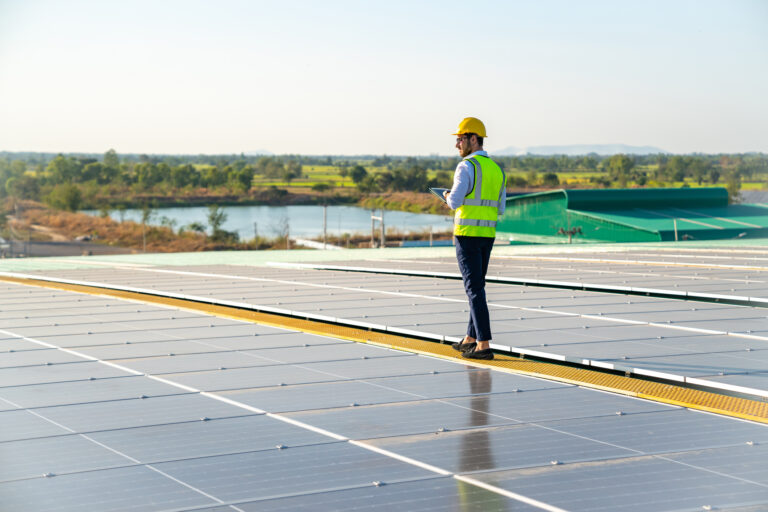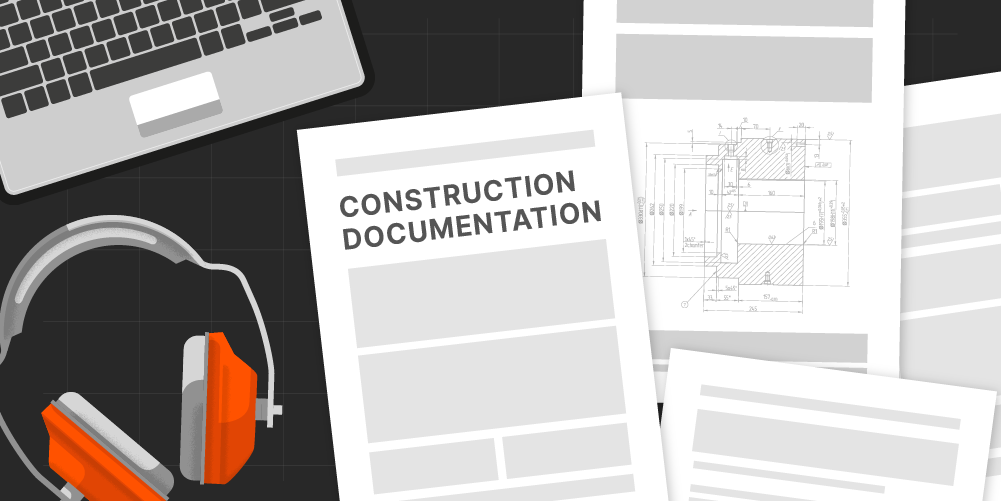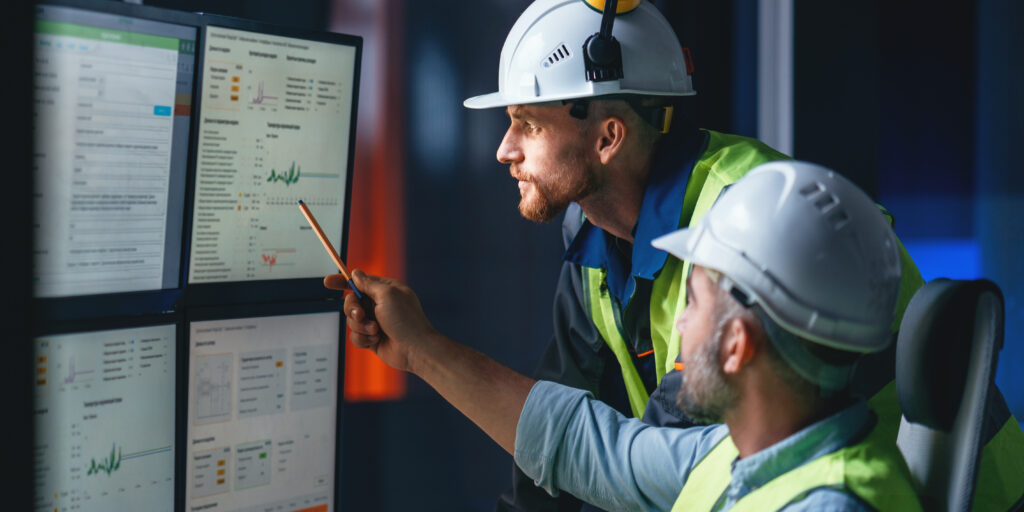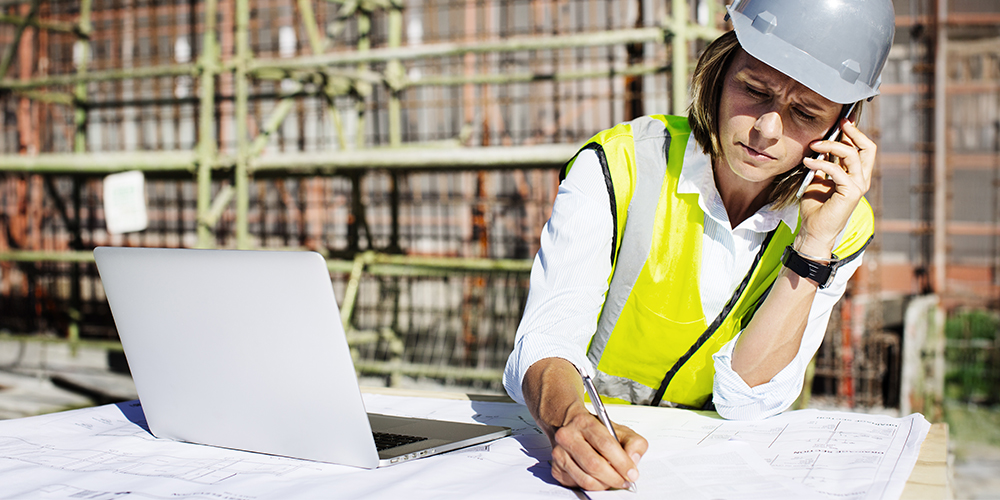— 6 min read
Creating a Green Energy Powerhouse
Last Updated Feb 10, 2025
Last Updated Feb 10, 2025

Australia's property sector has the opportunity to lead the global transition to clean energy by embracing renewable projects. With significant investment expected in the sector, builders must leverage advanced technology to construct to the highest standards. This commitment to quality not only enhances the appeal of renewable energy projects to investors but also creates a positive feedback loop: as projects are completed on time and within budget, investor confidence grows, leading to increased funding, increased pipeline visibility and more ambitious builds.
A recent survey of 400 Australian property and energy leaders, Power Play: Energising Opportunities in Property and Renewables, indicates that 74% of property leaders are already investing in renewable solutions like smart grids and battery storage, with 41% of non-investors planning to enter the market soon. This momentum, combined with Australia’s goal of achieving 82% renewable electricity by 2030—up from nearly 40% today—positions the country as a frontrunner in clean energy.
The survey reveals that 92% of property leaders see renewable energy as critical. By addressing investment barriers and adopting innovative technologies, the construction industry can ensure premium builds that attract further investment, creating a sustainable cycle of growth.
In this dynamic landscape, the Australian built environment has the potential to not only lead in renewable energy but also set new benchmarks for quality and efficiency, ultimately driving the global energy transition forward.
Table of contents
Overcoming Investment Barriers
Property companies face significant challenges, primarily high initial capital costs, technology integration and regulatory uncertainties. The survey underscores the need for comprehensive strategies to overcome these major barriers.
Investors are often cautious about renewable projects due to risks like shifting responsibilities from energy buyers (off-takers) and original equipment manufacturers (OEMs), volatility from the energy transition, and early-stage exposure to connection risks. Construction companies who consistently deliver renewable projects on time, on budget, and to the best standards using advanced technology, can significantly reduce these risks. A strong track record of quality projects can build investor confidence, making Australian renewable energy ventures more attractive, even in risky environments. Two of the most significant barriers are:
Government Support and Technology
Investors perceive high risks due to regulatory uncertainty. Many survey respondents believe that subsidies and supportive programs would be the most effective way to encourage renewable adoption. There are already positive steps in place, like the National Energy Transformation Partnership, a framework that promotes collaboration between all levels of government to transform Australia’s energy system. This framework includes the Capacity Investment Scheme, which aims to reduce investment uncertainty by agreeing a revenue floor and ceiling. With concessional financing programs like Rewiring the Nation, so builders who are equipped with advanced technologies can efficiently deliver the builds necessary for the renewable energy market, thereby reinforcing confidence in the sector.
Increasing Investment Certainty
A stable regulatory framework is critical for sustained investment, especially as Australia transitions from coal and gas (which make up 12% of its GDP) to renewables. Billions of dollars are flowing into projects that support Australia’s ambitions as a global renewable energy superpower, including the $22.7 billion in the May Federal Budget as part of the ‘Future Made in Australia’ plan. This backing from the government is providing certainty to investors. While projects that go on to succeed in this environment generate further investment, as positive outcomes lower the perception of risk.
Nearly 75% of property leaders are already embracing renewable energy. Find out more.
Key Opportunities for Growth in Construction
Many believe that Australia’s property industry is leading the world on renewables adoption. Builders who are able to deliver projects to the highest standard, will be central to creating the conditions that drive ongoing investment and build investor confidence, giving Australia the potential to be a leader in the global shift towards clean energy.
Driving Technology Uptake and Diversity
To remain competitive, Australia must rapidly adopt new technologies that enhance flexibility and meet evolving market demands. The Power Play survey highlighted challenges with integrating renewable solutions into existing infrastructure, including issues around performance, reliability, and system interoperability.
Francesca Muskovic, Director of National Policy at Property Council of Australia touches on the obstacle of EV adoption in Australia, noting the lack of government incentives as hampering EV uptake, ““Why the disparity between retail and office EV charging installations? There is no collective view or policy yet from government on where charging infrastructure must go, and the international experience shows most charging occurs at the home. For commercial building owners and managers, I think we can expect demand for EV charging is likely to emerge where tenants have fleet vehicles onsite.”
Overcoming these challenges requires the adoption of diverse technologies that can improve the construction process and deliver high-quality outcomes. By deploying advanced solutions quickly, Australia will ensure it stays ahead in the global energy race. These technologies not only enhance quality but also provide the flexibility needed to meet market and client demands, making the sector more attractive to investors.
Harnessing Australia’s Unique Advantages
Despite existing challenges, the vast physical resources and low population density of Australia present a key opportunity. As Angela Karl, Managing Director of HMC Capital, pointed out at the Australian Clean Energy Conference (ACES), Australia receives 400 times the renewable energy it needs each day. Additionally, as a top-five reserve holder of 16 Quad-designated critical minerals, Australia is well-positioned to export renewable energy and mitigate the economic impact of its coal power station closures.
Australia can harness this resource in so many ways, to not only meet domestic energy needs but also become a major global exporter of renewable energy.
Capturing Global Energy Demands
The global energy demand associated with AI, data centres and cryptocurrency is forecast to double by 2026. This presents a significant opportunity for Australia to scale up its renewable energy production.
Data centre construction, in particular, is emerging as a key growth area. These facilities are energy-intensive, and their rapid expansion presents an ideal avenue for Australia to leverage its open landscape and renewable energy resources. Survey respondents have identified data centres as a strategic opportunity for large-scale energy solutions, such as community solar projects and enhanced grid connectivity.
By embracing advanced construction technologies and focusing on renewable energy infrastructure, Australian businesses can position the nation as a leader in supporting global energy needs.
Improving Value Chain Position
By identifying opportunities to manufacture and distribute clean energy, and developing the necessary local capabilities, Australia could move up the value chain. This is a significant undertaking, and Australia is already making some positive steps such as the Solar Sunshot Program and Battery Breakthrough Initiative, which focus on improving local manufacturing capabilities.
A Green Future
Billions of dollars are flowing into Australia's renewable sector, making effective management and execution of renewable projects essential for fostering the confidence and certainty needed to attract further investment.
Australia’s journey to becoming a renewable energy leader is underway, but it will require bold action from both the government and private sector. The adoption of new technologies, clear policy frameworks, and streamlined project management will be vital to scaling up efforts and meeting national targets.
Categories:
Tags:
Written by
Samantha Nemeny
9 articles
Sam—Samantha if she’s feeling particularly academic—has spent a decade in content marketing, with eight years focused on Australia’s construction industry. She has a knack for making complex ideas easy to understand, turning industry jargon into clear, engaging stories. With a background in SEO and marketing, she’s spent the past three years at Procore, helping industry professionals navigate the world of construction with content that’s both insightful and easy to digest.
View profileExplore more helpful resources

Document Control, Mastered: Blueprints, Binders & the Cloud
In construction, poor document control is more than a hassle—it’s a liability. Mismanaged documents can delay builds, drive up costs, and cause security and compliance issues. It’s a challenge facing...

Construction Progress Claims: Keeping Cash Flowing
In construction, steady cash flow is critical—and progress claims help make that possible. These claims enable staged payments based on work completed, rather than waiting until project completion. In this...

Construction Analytics: The Key to Smarter Decision-Making
Data is everywhere in construction—embedded in schedules, site activity logs, safety reports, and cost tracking tools. Yet despite the abundance of available information, many construction decisions still hinge on gut...

Construction Document Management: The Challenges and Benefits of Embracing a DMS
Every construction project begins, continues, and ends with a mountain of paperwork. From initial bidding documents to contractor agreements, blueprints, variation orders, inspection reports, on and on it goes. And...